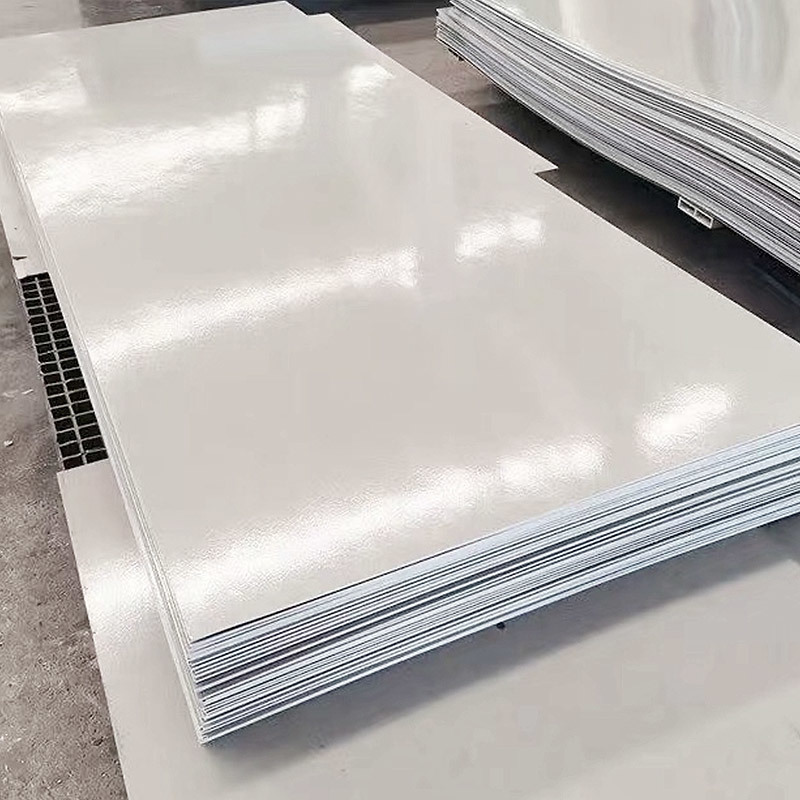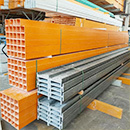How Vacuum-Infused FRP Panels Contribute to Energy Efficiency
Jul 18,2025
How Vacuum-Infused FRP Panels Contribute to Energy Efficiency
Table of Contents
1. Introduction to Vacuum-Infused FRP Panels
2. The Importance of Energy Efficiency in Construction
3. What Are Vacuum-Infused FRP Panels?
4. The Process of Vacuum Infusion in FRP Manufacturing
5. Benefits of Vacuum-Infused FRP Panels for Energy Efficiency
6. Applications of Vacuum-Infused FRP

How Vacuum-Infused FRP Panels Contribute to Energy Efficiency
Table of Contents
- 1. Introduction to Vacuum-Infused FRP Panels
- 2. The Importance of Energy Efficiency in Construction
- 3. What Are Vacuum-Infused FRP Panels?
- 4. The Process of Vacuum Infusion in FRP Manufacturing
- 5. Benefits of Vacuum-Infused FRP Panels for Energy Efficiency
- 6. Applications of Vacuum-Infused FRP Panels in Construction
- 7. The Environmental Impact of Using FRP Panels
- 8. The Future of Vacuum-Infused FRP Panels in Sustainable Building
- 9. Frequently Asked Questions
- 10. Conclusion
1. Introduction to Vacuum-Infused FRP Panels
In the ever-evolving landscape of construction materials, **vacuum-infused Fiber-Reinforced Polymer (FRP) panels** have emerged as a game changer. These advanced materials not only enhance structural integrity but also significantly contribute to **energy efficiency** in buildings. By exploring the properties and benefits of vacuum-infused FRP panels, we can understand how they play a critical role in modern construction practices aimed at sustainability.
2. The Importance of Energy Efficiency in Construction
Energy efficiency is a cornerstone of sustainable construction. Buildings account for a substantial portion of global energy consumption. As the demand for **sustainable building materials** increases, the need for materials that improve energy performance becomes paramount. Energy-efficient designs reduce operational costs, lower carbon footprints, and enhance overall occupant comfort.
3. What Are Vacuum-Infused FRP Panels?
Vacuum-infused FRP panels are composite materials made from a polymer matrix reinforced with fibers such as glass or carbon. The **vacuum infusion process** involves drawing resin into the fibers under vacuum pressure, ensuring a complete and uniform fill. This method not only results in lightweight panels but also enhances their structural properties, making them ideal for various applications in construction.
4. The Process of Vacuum Infusion in FRP Manufacturing
The manufacturing process of vacuum-infused FRP panels is intricate and requires precision:
1. **Preparation of the Mold**: A mold is created to shape the panels, ensuring the desired dimensions and surface finish.
2. **Placement of Reinforcement Fibers**: Layers of reinforcement fibers are strategically placed within the mold.
3. **Resin Infusion**: A vacuum is applied to the mold, which draws resin into the fiber layers, saturating them completely.
4. **Curing**: The panels are then cured, allowing the resin to polymerize and harden, resulting in a strong and durable material.
This controlled process yields panels that exhibit superior strength-to-weight ratios, excellent thermal insulation, and resistance to environmental damage.
5. Benefits of Vacuum-Infused FRP Panels for Energy Efficiency
Vacuum-infused FRP panels offer several key advantages that contribute to **energy efficiency**:
5.1 Enhanced Thermal Insulation
One of the standout features of FRP panels is their exceptional thermal insulation properties. They help maintain indoor temperatures, reducing the reliance on heating and cooling systems. This leads to significant energy savings over the lifespan of a building.
5.2 Lightweight Nature
The lightweight nature of FRP panels reduces the overall weight of structures, allowing for more efficient transportation and installation. Lower weight translates to less energy consumed during the construction phase.
5.3 Durability and Longevity
Vacuum-infused FRP panels are highly resistant to moisture, corrosion, and environmental stressors. Their durability results in lower maintenance costs and longer lifespans, which further enhances their energy efficiency appeal.
5.4 Eco-Friendly Characteristics
Many FRP panels are manufactured using sustainable practices and recyclable materials. This eco-friendly aspect aligns with the growing demand for environmentally responsible construction practices.
6. Applications of Vacuum-Infused FRP Panels in Construction
The versatility of vacuum-infused FRP panels enables their use in a wide array of construction applications:
6.1 Building Facades
FRP panels are increasingly used in building facades, providing aesthetic appeal while enhancing thermal performance. Their lightweight nature simplifies installation and reduces structural load.
6.2 Roof Systems
Their excellent insulation properties make FRP panels suitable for roofing systems, contributing to energy savings by minimizing heat transfer.
6.4 Interior Wall Panels
In interior applications, FRP panels serve as durable finishes that are easy to clean and maintain, further enhancing the energy efficiency of indoor environments.
7. The Environmental Impact of Using FRP Panels
The adoption of vacuum-infused FRP panels contributes positively to the environment in several ways:
7.1 Reduction of Carbon Footprint
By improving energy efficiency in buildings, FRP panels help to lower greenhouse gas emissions associated with energy production.
7.2 Sustainable Material Use
Utilizing renewable resources and recycling options in the production of FRP panels supports sustainable material practices, reducing the depletion of natural resources.
8. The Future of Vacuum-Infused FRP Panels in Sustainable Building
The future of vacuum-infused FRP panels looks promising, with ongoing advancements in material science and manufacturing techniques. As the construction industry increasingly prioritizes sustainability, the demand for innovative materials like FRP panels will continue to grow. Future developments may include enhanced recycling capabilities and the incorporation of smart technologies into FRP panels for increased energy monitoring and efficiency.
9. Frequently Asked Questions
9.1 What are the main advantages of using vacuum-infused FRP panels?
The primary advantages include enhanced thermal insulation, lightweight construction, durability, and eco-friendly characteristics.
9.2 How do vacuum-infused FRP panels compare to traditional building materials?
FRP panels typically offer better insulation, are lighter, and have a longer lifespan compared to traditional materials like wood and metal.
9.3 Are vacuum-infused FRP panels environmentally friendly?
Yes, many FRP panels are made from sustainable materials and can significantly reduce a building's energy consumption, contributing to lower carbon emissions.
9.4 What applications are best suited for vacuum-infused FRP panels?
FRP panels are suitable for facades, roofing systems, and interior finishes among other applications, due to their versatility and energy-efficient properties.
9.5 What is the expected lifespan of vacuum-infused FRP panels?
With proper installation and maintenance, vacuum-infused FRP panels can last for several decades, making them a long-term investment for energy-efficient building projects.
10. Conclusion
Vacuum-infused FRP panels represent a significant step forward in the quest for **energy efficiency** within the construction industry. Their unique properties, combined with sustainable manufacturing practices, position them as a leading choice for modern building materials. As the industry evolves, the continued integration of these innovative panels will play a critical role in building more energy-efficient, resilient, and eco-friendly structures for the future. Embracing the advantages of vacuum-infused FRP panels not only enhances energy efficiency but also aligns with broader environmental goals, paving the way for smarter and more sustainable construction practices.
Previous:




